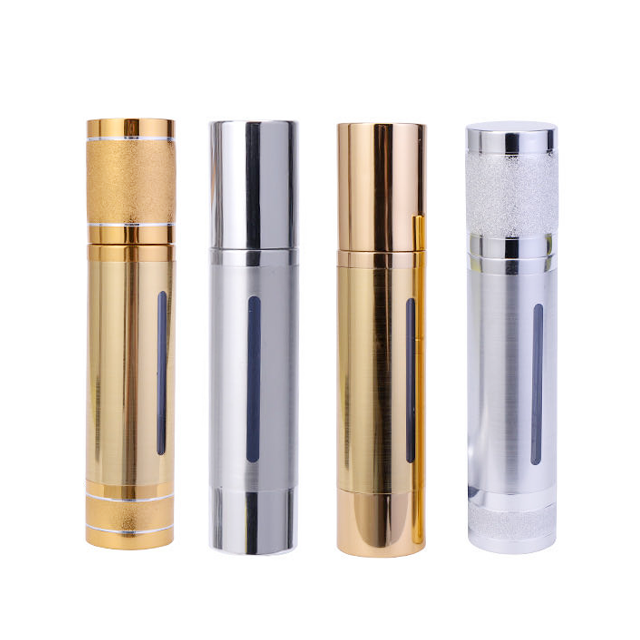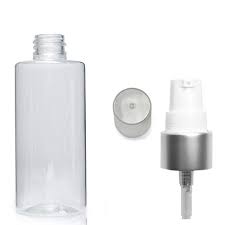
Top Trends in Skincare Packaging for 2025
Published on:
2025-04-15
Meta Description
Discover the top skincare packaging trends for 2025 including sustainable materials, smart tech, refillable containers, and minimalist designs. Future-proof your beauty brand!
As the beauty and skincare industry continues to grow rapidly, one critical aspect that brands can’t afford to overlook is skincare packaging. In 2025, packaging is no longer just a protective shell around the product—it’s an essential element of branding, sustainability, and customer experience. From eco-conscious solutions to tech-integrated innovations, packaging trends are evolving to meet consumer demands and global environmental goals.
This article explores the top trends in skincare packaging that are defining the beauty landscape in 2025. Whether you are a skincare brand owner, product developer, or just a curious enthusiast, understanding these trends can provide valuable insights into where the industry is headed.
1. Sustainable and Eco-Friendly Packaging
Sustainability remains at the forefront of packaging innovation. Consumers are more eco-conscious than ever and demand transparency and responsibility from their favorite skincare brands. In 2025, sustainable skincare packaging isn’t just a trend—it’s a necessity.
Materials Leading the Way:
- Recycled plastics (PCR - Post-Consumer Resin)
- Biodegradable containers made from bamboo, cornstarch, and sugarcane
- Glass packaging, which is recyclable and non-reactive
- Refillable systems, allowing consumers to reuse outer containers
Brands like Lush and The Body Shop have already made waves with naked packaging and refill stations, while Tata Harper uses 100% recyclable glass bottles in elegant green hues. As these sustainable solutions gain popularity, more indie and established brands are expected to follow suit.

2. Minimalist and Aesthetic Design
In the age of Instagram and TikTok, visuals speak louder than words. Minimalist skincare packaging with clean lines, neutral color palettes, and subtle branding is trending in 2025. This design philosophy reflects a broader societal shift towards simplicity and mindfulness.
Characteristics of Minimalist Packaging:
- Soft matte finishes
- Monochrome or pastel tones
- Clear and concise typography
- Transparent containers showing the product inside
Consumers are drawn to packaging that conveys purity and transparency, which are essential values in the skincare industry. A clean look suggests a clean product—something vital in an industry all about skin health.

3. Refillable and Reusable Systems
Refillable packaging is becoming more mainstream in 2025. This shift not only caters to eco-conscious consumers but also encourages brand loyalty. By offering refills, brands reduce packaging waste and incentivize customers to keep coming back.
Examples of Refillable Skincare Packaging:
- Airless pump systems that can be easily reloaded
- Pods and cartridges that insert into outer shells
- Luxury jars made from durable materials with replaceable product inserts
Brands like Fenty Skin and Kjaer Weis have already introduced stunning refill systems that save both waste and money over time. In 2025, expect to see more customizable packaging that allows personalization and flexibility.

4. Smart Packaging and QR Code Integration
Tech-enhanced packaging is making a splash this year. Smart skincare packaging includes features like QR codes, NFC (near-field communication), and even augmented reality experiences. These additions bridge the gap between physical products and digital content.
What Can Smart Packaging Do?
- Offer product tutorials via QR codes
- Trace product origin and authenticity
- Provide usage instructions and expiration reminders
- Enhance loyalty programs and customer engagement
Smart packaging empowers customers with instant access to information while offering brands valuable data on user interaction. The result? A more informed and interactive skincare journey.

5. Airless Packaging for Product Protection
Airless packaging is not new, but it's gaining momentum in 2025 due to increasing demand for preservative-free and natural skincare products. These containers prevent air and contaminants from entering the bottle, preserving the product’s integrity for longer.
Benefits of Airless Packaging:
- Maintains formula potency by limiting oxygen exposure
- Enhances hygiene and reduces contamination risk
- Dispenses precise amounts, reducing product waste
Airless systems are especially popular for serums, anti-aging creams, and vitamin-enriched formulations. With clean beauty taking center stage, this type of skincare packaging offers both efficacy and elegance.
6. Mono-Material Packaging for Easy Recycling
Another hot trend is mono-material packaging—packaging made from a single type of material, making it easier to recycle. While multi-material containers (like a mix of plastic and metal) are difficult to process, mono-materials allow for streamlined disposal and less environmental impact.
Popular Mono-Materials:
- PP (Polypropylene)
- HDPE (High-Density Polyethylene)
- PET (Polyethylene Terephthalate)
Companies are also reducing ink usage and avoiding colored plastics that hinder recyclability. As countries implement stricter recycling regulations, mono-material packaging is becoming the gold standard.
7. Inclusive and Accessible Packaging Design
In 2025, inclusivity is a key concern across the beauty industry. Packaging is now designed with accessibility in mind, ensuring ease of use for people with disabilities or mobility challenges.
Inclusive Features:
- Braille labeling for the visually impaired
- Ergonomic shapes for better grip
- Easy-open caps and twist-free dispensers
- Color-coded systems for product recognition
This thoughtful packaging approach not only broadens the consumer base but also promotes brand values of diversity and inclusion. More companies are investing in inclusive designs to reflect their commitment to all users.
8. Luxury Packaging with Sustainable Intent
Luxury skincare brands are walking a fine line between opulence and environmental responsibility. In 2025, high-end brands are redefining luxury with sustainable elements such as hand-crafted recyclable glass, embossed metal caps, or FSC-certified paper boxes.
The result is luxury packaging that doesn’t compromise the planet. Some brands even use biodegradable silk wraps and plant-based inks to enhance the unboxing experience without environmental guilt.
Luxury, after all, is also about the values a brand stands for—and sustainable elegance is the new definition of premium.
9. Customizable and Personalized Packaging
From personalized messages to unique bottle engravings, customization is booming in 2025. With advances in digital printing and on-demand production, skincare brands can now offer limited edition, seasonal, or user-specific packaging that boosts engagement.
Ideas for Personalized Skincare Packaging:
- Names printed on bottles or jars
- Custom scent blends and labels
- Interactive packaging that responds to preferences or skin types
Customization not only adds emotional value to products but also strengthens brand loyalty. It’s a trend that resonates particularly well with Gen Z and millennials who crave uniqueness and self-expression.
Relevant news
undefined

Shantou Xinrong Co., Ltd.
COPYRIGHT © 2022 SHANTOU XINRONG CO., LTD.(汕头市鑫荣贸易有限公司) 粤ICP备2022040726号 TECHNICAL SUPPORT BY 300.CN Privacy Agreement
COPYRIGHT © 2022 SHANTOU XINRONG CO., LTD. (汕头市鑫荣贸易有限公司)
粤ICP备2022040726号
TECHNICAL SUPPORT BY 300.CN Privacy Agreement

Product inquiry





